Recommendations
This project revealed innumerable opportunities to improve processes after identifying several challenging barriers… the primary buggahs being: lack of standards; wide range of file formats; incomplete data; inaccurate data; untimely data; reticence to share/privacy of business info; varying overlapping data from different agencies/entities. We also discovered that, to minimize redundancy, the best sources of the data would be from the the two ends of the food supply chain (farms/producers and consumers), which also currently happen be the most difficult to get. Below are a handful of some of the most efficacious solutions we came across and/or ideated to help improve the health of the food system:
.
Near Infrared Spectroscopy
A portion of radiation that is just beyond the visible spectrum is referred to as near-infrared. Rather than studying an object’s emission of infrared, scientists can study how objects reflect, transmit, and absorb the Sun’s near-infrared radiation to observe health of vegetation and soil composition.
HEALTHY VEGETATION
Our eyes perceive a leaf as green because wavelengths in the green region of the spectrum are reflected by pigments in the leaf, while the other visible wavelengths are absorbed. In addition, the types of and components in plants reflect, transmit, and absorb different portions of the near-infrared radiation that we cannot see.

Satellites and/or Drones
Satellites quickly cover the most area, but costs and cloud cover may be barriers. Drones can focus on per parcel inventorying, but may be time consuming and require FAA approval. Privacy concerns could be addressed via aggregate data-sharing.
Spectral Signatures of Vegetation
Each plant has unique spectral signature which enables the creation of a food system inventory without the need for data input from individual farmers.
Soil Composition
Biology, chemistry & structure are the general attributes of concern relative to soil health, within which a universe of complexity exists. For most farming purposes, knowing the pH, nutrients & availability of water & sunlight helps address the top level needs.
Layered Maps
The University of Hawaii’s Geography Department compiled extremely detailed GIS data (rainfall, evapotranspiration, solar radiation, climate which could be of great benefit to farmers, when appropriately layered in conjunction with the near-infrared spectroscopy mentioned above, as well as soil and practical plants index.
Such data layers when correlated to the Hawaii Food System Metrics could help identify preferred parcels for import substitution.

Leveraging Technology & Innovation
Online forms are a very simple, affordable way to gain access to more timely data IF (that’s a massive capital if) farmers were willing and/or able to provide updates more frequently via the web, rather than via extremely inefficient phone or written surveys. Workshops, ag ambassadors (interns/volunteers), incentives, etc may be worth exploring to improve likelihood of data access.
Landholders
There’s lots of under-utilized land and/or space (from roofs and walls, to yards and parks, to conservation, cropland, pastureland, etc – private and public). With a bit of creativity and some matchmaking… those spaces can be put to healthy use.
Growers
Demand for healthy food production is increasing. Budding farmer-entrepreneurs are emerging. With a dash of innovative thinking and heaps of persistent action, farming can turn into a prized profession… granted access to the land!
Meet your Soilmate
Matchmaking for landholders and growers helps bring the perfect people together for some fruitful (and vegiful?) endeavors. Custom profiles help match priorities, skills, exchanges, etc… welcome to the digital age… love at first byte!!!
Providers
Goods and services providers from all aspects of the ag industry can create a free online store (aka “local ag amazon”) to sell anything from seeds, EM, biochar, tractors, food safety certification, permaculture, etc… a one-stop ag shop!
Buyers
Institutions, restaurateurs, groups, individuals, etc can all buy directly from providers (including growers) for pick up or delivery. Direct sales can reduce costs by 50-70%, making it much more accessible for all, while also improving margins for farmers.
Learners
Some service providers will be educators who can teach interested learners online or in-person working groups about an interesting aspect of the ag industry from fundraising to value-added production to cottage industry development, etc.
Waste Management
The amount of food that is wasted from farm to retailer to consumer is staggering, particularly for meats, fruits and vegetables. There are many creative ways to address these issues as mentioned in the links above, as well as the creation of Group GAP food hubs and value-add processors to create fermented, dehydrated, canned, jarred, etc foods.
The amount of imported foods could decrease dramatically with a correlate decrease in food waste. It’s absurd to import so many fruits and vegetables via premium air freight when 53.6% and 59.9%, respectively, are wasted. Such excessive waste also makes it clear that the conversation about food security needs to be contextualized more broadly AND specifically.

53.6% Total loss, all levels

59.9% Total loss, all levels

30.4% Total loss, all levels

47.4% Total loss, all levels

30% Total loss, all levels


Healthy Food Incentives Initiative
One of the biggest challenges to food security is ensuring equitable access to nutritious foods. For a wide range of reasons, this is particularly difficult for those of lower socio-economic status. USDA SNAP & WIC are a couple programs that were created to provide financial assistance to those in need, but without any quantifiable system to monitor healthy consumption, which enables lower cost, empty calorie foods to be purchased more frequently. One’s diet is the single most important preventive measure one can take to reduce chronic ailments like heart disease, diabetes and obesity.
A USDA SNAP pilot study revealed that monetary incentives of $.30 for every dollar spent improved whole foods consumption (fresh fruits & vegetables) over 25%. There are even greater incentives emerging like “double dollars” from Wholesome Wave. Such incentives are showing even higher improvements in whole food consumption. Improving access is a primary goal.

The Money Flow
Health Insurance Companies are willing to reduce policy costs for employers’ full-time employees by up to 1/3 ($983/yr) because “an ounce of prevention is worth a pound of cure.” This savings for employers translates to up to 400% ROI due to reduced absenteeism and presenteeism. Employees save money on food and health care costs. Farmers, grocers and qualifying restaurateurs make more money on healthier foods. More money in the local economy has a multiplier effect increasing taxes 2-3x.
USDA SNAP (Supplemental NUTRITION Assistance Program) contributes about $500 million/yr to about 1/4 of the 400,000 Hawaii homes. USDA WIC accounts for another $100 million per year. Since it requires an act of Congress to change ruling on consumption standards for monies provided, innovators decided to try the carrot rather than stick and it worked.
We’ve pieced together a much more comprehensive, quantifiable, tracking system to better incentivize healthier food consumption and provide the proof in (aggregate) data to employers, insurance companies, participating vendors and governmental agencies. We leverage large pots of existing monies and redirect them in ways to better realize each entities goals… everyone wins with better health (financial health too!).


